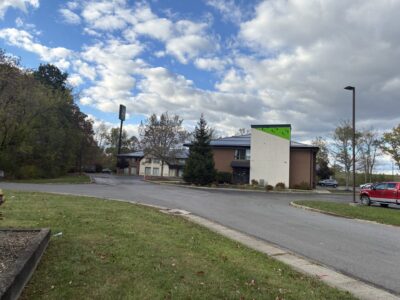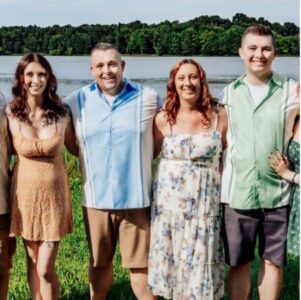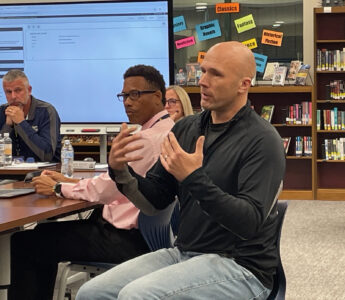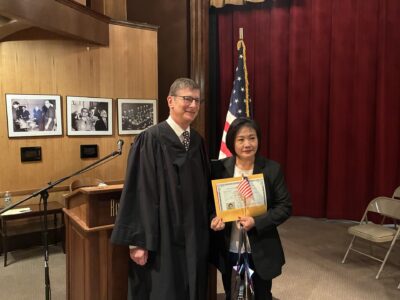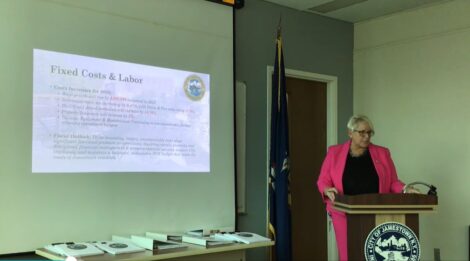Erlandson Talks Lake History As Part Of Lawson Center Series
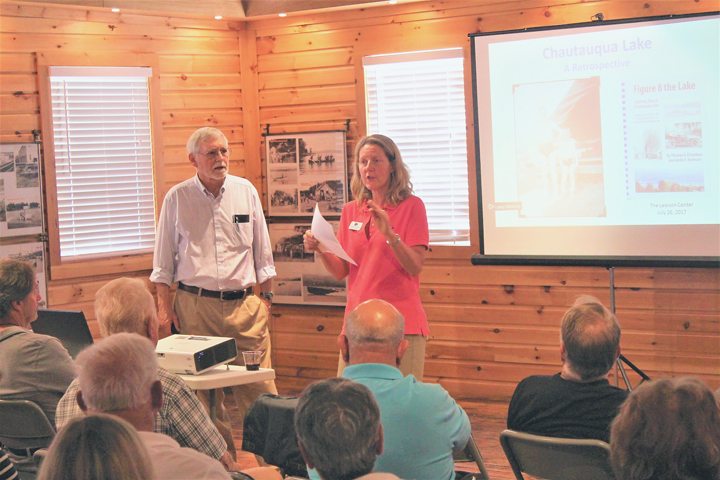
Tom Erlandson and Sharon Graper at the Lawson Center in Bemus Point during the season lecture series. P-J photo by Jordan W. Patterson
BEMUS POINT — Inside the Lawson Center in Bemus Point, Tom Erlandson gave a lecture on the history of Chautauqua Lake, the same lake behind him that was only separated by the Lawson Center walls.
“I’ve been working on Chautauqua Lake one way or another since 1960 when I worked for the state health department,” Erlandson said of his career after graduating from Jamestown Community College in 1960. “My program here tonight is, as you see in the title, a retrospective look back on some of my experiences on the lake but more than that it’s an attempt to explain the lake on how the lake functions.”
Sharon Graper, head of the Lawson Center Education Committee, said that after speaking with four different people who knew the history of Chautauqua Lake, Erlandson was at the top of each of those individuals’ list.
Erlandson discussed various aspects concerning Chautauqua Lake. He explained how Chautauqua Lake, and lakes in general, are created. Erlandson explained that due to glaciation, Chautauqua Lake, Cassadaga Lake, Bear Lake, Findley Lake and even Lake Erie were formed. As the glaciers began to recede to the north, ice began to melt — and as a result — water was left behind.
Sometimes water was left in larger quantities in one place more than others. For example, much more water was retained where Lake Erie was formed as opposed to Chautauqua Lake.
Another issue Erlandson spoke about was the concern for the amount of phosphorus being dumped into the lake.
“We need to reduce the amount of phosphorus in the lake,” Erlandson said.
Closing his talk, Erlandson went through the human connection to Chautauqua Lake. He explained that when the Iroquois, specifically the Seneca Nation, dominated Western New York, they would use Chautauqua Lake during the summer for fishing purposes, but never truly settled there.
He then described two French Expeditions that crossed paths with Chautauqua Lake before he jumped to 1863. Chautauqua Lake truly saw a rise of popularity during the Steamboat Era. During this time, Celoron, Mayville and Chautauqua were all steamboat ports.
Refreshments for the lecture were donated by Wegmans and The Ellicottville Brewing Company.
“People have been very supportive,” Graper said. “It’s free, it’s for members and non-members. So, it’s a great opportunity to get inside the museum if you’ve not been in it.”
Erlandson’s talk was part of a lecture series hosted by the Lawson Center. Graper discussed the extent of the lecture series. She explained that this year marks the second year of the lecture series at the Lawson Center. Typically, the talks take place on the last Wednesday of every month.
“It’s been quite successful and (includes) interesting topics,” Graper said. “We ask the membership what they’re interested in learning about so we try to have a mix of everything from natural science kinds of things to historical kinds of things.”
Erlandson is originally from Jamestown, a Jamestown Community College graduate and retired professor of geology and biology. He continues to work on the county Board of Health and the Alliance Science Committee, among other groups.
The lecture series will continue through the summer and feature various topics and guest speakers. The next installment of the lecture series will be on Aug. 30 .

